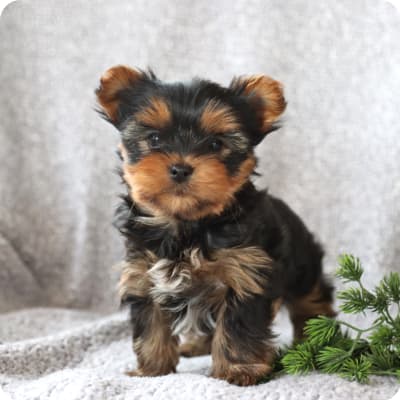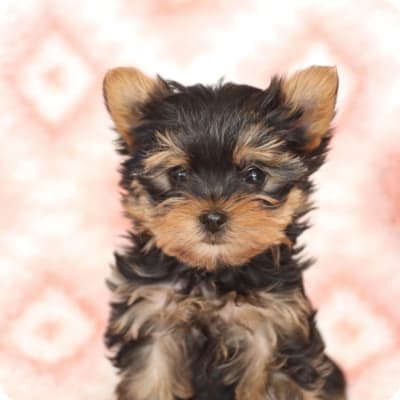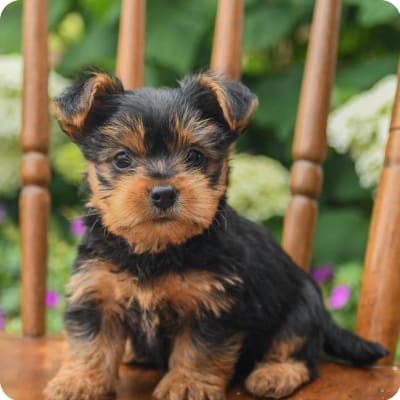Yorkshire Terrier Puppies

The Brave, Energetic, and Adventurous Yorkshire Terrier
Intelligent, easy to train, and active, the Yorkshire Terrier is a spunky breed that's widely adored. Bred as pest control for factories and eventually becoming a favorite among the upper class, the loyal and loving Yorkie is the perfect size for apartments and loves curling up in its owner's lap. Yorkshire Terriers have a silky, hypoallergenic coat that sheds very little, making them ideal pets for people with allergies.
Yorkshire Terrier At a Glance




Yorkshire Terrier At a Glance
- Size: 8"-9", 3-8 lbs.
- Lifespan: 12-15 years
- Energy Level: high
- Coat: Long, silky, fine, and straight
- Shedding: light
- Hypoallergenic: Yes
- Dog Group: Toy
- Common Nicknames: Yorkie, Tomboy Toy
Yorkshire Terrier Breed Guide
Learn More About Yorkshire Terriers


